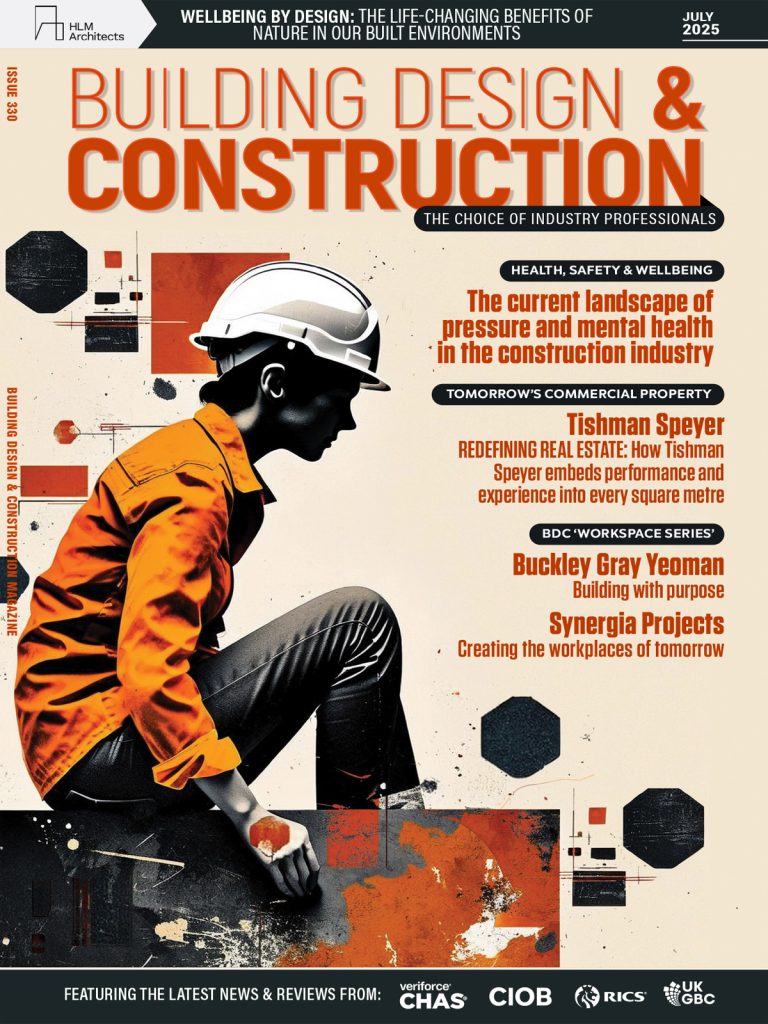This article is sponsored by George Ide LLP. As a leading law firm specialising in personal injury claims and compensation, they have a wealth of experience representing construction injury cases and recognise the paramount importance of keeping construction sites safe.
The construction industry remains one of the most dangerous sectors in the whole of the UK, sadly often leading to significant personal injury claims and compensation payouts.
The sobering statistics of workplace fatalities and injuries on building sites tragically outnumber most other industries combined, only illustrating how important proper due diligence, robust safety protocols and comprehensive training are. Employing proper safety etiquette on all sites, regardless of their size or scope, protects not only the workers but also the businesses themselves.
The Reality of Construction Workplace Injuries
Recent HSE and RIDDOR statistics reveal that 35 construction workers died of injuries on site in 2024/25, which is the highest percentage out of all data aggregated from the main industries.
The same report found that the main kinds of fatal accidents were falls from height, accounting for nearly double the next largest fatality, which was workers being struck by moving objects.
These statistics represent real people whose lives have been forever changed by workplace accidents that, in many instances, could have been prevented with proper safety measures.
Actionable Steps for Safer Construction Sites
Every construction project must begin with a thorough site risk assessment that identifies potential hazards and implements appropriate control measures. Site managers should conduct regular audits and dynamically update these assessments as work progresses and conditions change. This ensures any new problems are identified and mitigated before they result in accidents.
All personnel entering construction sites — be they contractors, subcontractors, owners, or building management — must receive appropriate, role-specific training for the tasks they will perform and the specific hazards they may encounter. This includes basic training and safety etiquette as well as regular refresher courses and specific training for new equipment, tools or procedures.
Contractors must provide and maintain appropriate safety equipment for all personnel. This will involve checking that all machinery is properly maintained and regularly tested, and that workers have access to suitable PPE for their specific tasks.
Establishing clear channels and reporting lines for any safety concerns, near misses, and incidents, however innocuous they may seem, is vital. Workers must feel confident that raising safety concerns will be taken seriously, investigated thoroughly and acted upon promptly.
Adequate supervision is key to ensuring that safety protocols are consistently followed while personnel are on-site. Site supervisors should be trained to identify potential hazards and have the authority to stop work when safety concerns arise.
The Cost of Poor Safety Measures
If the statistics weren’t alarming enough, the financial implications of workplace accidents extend beyond hospital treatment. Businesses may face high legal fees, raised insurance premiums, substantial short-term payouts, costly project delays and a wealth of other potential and expensive problems.
The human cost, however, is insurmountable. Families and loved ones can have their lives forever altered after someone suffers an accident at work, while survivors of catastrophic brain injuries, spinal damage or amputations often face lifelong challenges requiring constant rehabilitation, medical care, and more.
The extensive experience George Ide LLP have in representing personal injury cases across the UK demonstrates that many accidents could have been prevented with proper safety measures and due diligence. The firm’s expertise in achieving seven-figure-plus settlements reflects not just the severity of injuries sustained in construction accidents, but also the financial consequences for injured workers and their families.
Making Construction a Safety-First Industry
The construction sector’s safety record, while improving gradually year-on-year, still requires urgent attention. A significant reduction in serious injuries and fatalities can only be achieved through proper involvement, commitment, meticulous planning, the right equipment, comprehensive training and genuine buy-in from all stakeholders.
Ultimately, construction businesses that prioritise safety not only protect their invaluable workers from harm but also safeguard their businesses and reputations from the devastating, long term consequences of workplace accidents.
Behind every safety statistic is a genuine human story that has been shaped, in some way, by their incident. Investing in safety is not just a regulatory requirement, it’s a moral incentive and a sound business decision.





